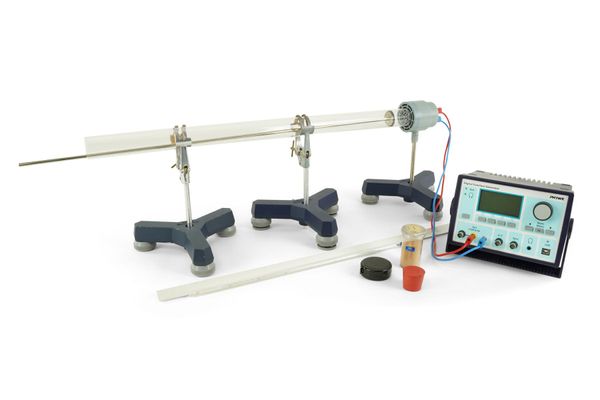
|
|
||||||||||||||||||||||||||||||||||||
|
Technical data Velocity of sound using Kundt's tube and digital function generatorArticle no: P2150605

Principle Cork dust in a glass tube is set into tiniest motion by a sound wave. If the frequency of the sound wave matches the natural frequency of the volume in the glass tube, a standing wave will form. The cork dust then assembles in visible patterns that show the nodes of pressure and motion of the standing wave. From the length of the volume and the number of the nodes the velocity of sound in the tube can be calculated for each natural frequency. Benefits
Tasks Determine the velocity of sound in air using Kundt's tube at different lengths of volume. Learning objectives
Scope of delivery
|
||||||||||||||||||||||||||||||||||||
|
|
PHYWE Systeme GmbH & Co. KG
Robert-Bosch-Breite 10 – 37079 Göttingen – Germany
www.phywe.com
Robert-Bosch-Breite 10 – 37079 Göttingen – Germany
www.phywe.com

